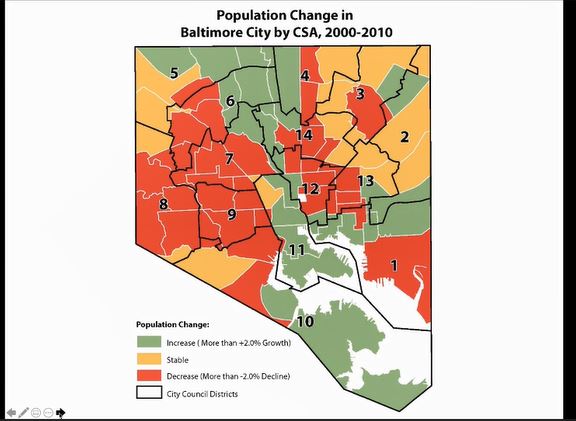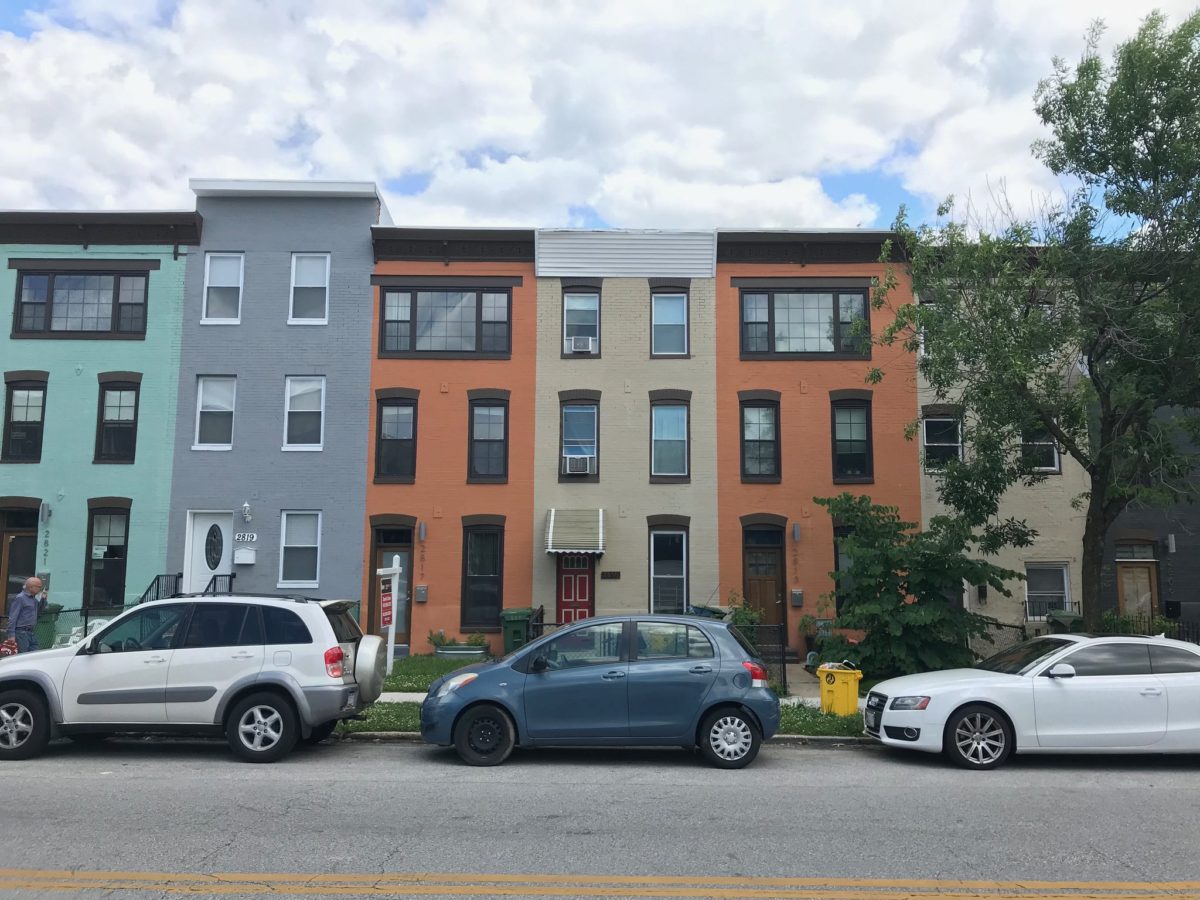To understand Baltimore’s population trends, look to the neighborhood level.
That was on view Tuesday at one of the first sessions of Baltimore Innovation Week 2021. Seema Iyer, who oversees the Baltimore Neighborhood Indicators Alliance (BNIA) at the University of Baltimore’s Jacob France Institute, led a workshop using the Vital Signs 19 report. The annual report from BNIA uses civic data to look at the health of Baltimore’s neighborhoods.
The session was geared toward business owners, and focused on three topic areas of the report: Workforce and economic development, housing and community development, and crime and safety.
Some of the data was stark in its depiction of the health of Baltimore. Population data set the stage.

While data from the 2020 U.S. Census is still coming in, the most recent annual estimates show the city is losing population, keeping with a trend that was true in the data from the 2000-2010 Census. A slide showed that Baltimore’s population fell by 5% from 2000-2010, in contrast to other nearby cities.
“This is our existential problem,” said Iyer. “We are the only East Coast city in that I-95 corridor megalopolis region that is continuing to lose population,” she said.
BNIA, Iyer said, is an organization that seeks to put that city data in a neighborhood context. On a neighborhood level, as has often been talked about in reports and critiques of the city, it’s a tale of two Baltimores — a city of haves and have nots, a White L and a Black butterfly. There are neighborhoods that are growing and stable, while others are declining.
“When you start to lose population in a city like ours, you start to lose everything else in that bundle of goods a neighborhood can provide,” Iyer said. “That becomes a vicious cycle. Once you start to lose, you continue to lose.”

The key to noticing all of these problems within the data is recognizing that it allows communities to accurately find solutions. Data has shown that 2020 had Baltimore’s lowest level of residential vacancy, per Vital Signs. Vacancy, or the percentage of residential homes that are unoccupied in a neighborhood, is a great indicator of whether a neighborhood is growing or declining. Increased funding and investment in rehabilitation of houses correlates with fewer vacancies. That’s data that could lead to a possible solution to some of these issues.

And from the data, Iyer found that connectedness was the missing link between neighborhoods that grew, and those that didn’t.
“Every neighborhood that had access to our mobility system, which right now unfortunately is our highway system, has grown,” said Iyer. “Connectivity is all about that thickness of markets. Some of our neighborhoods don’t have all of the permutations that a node of connectivity can yield.”







